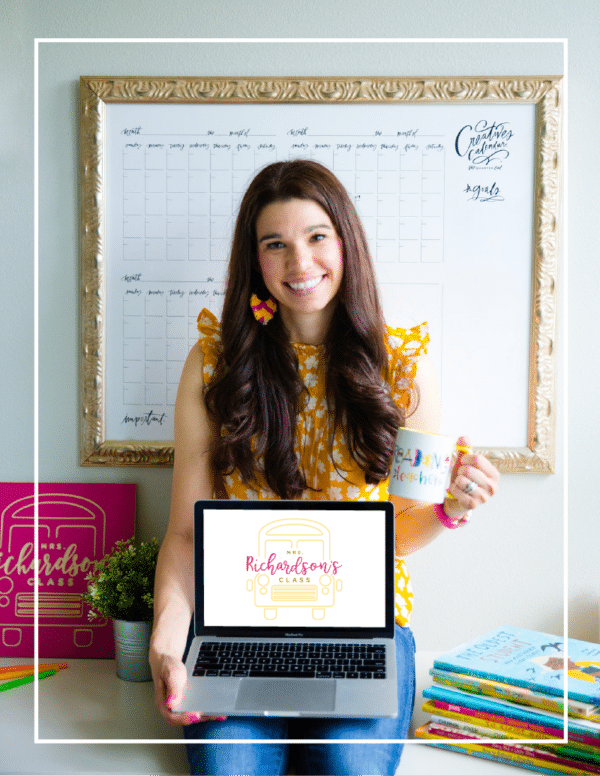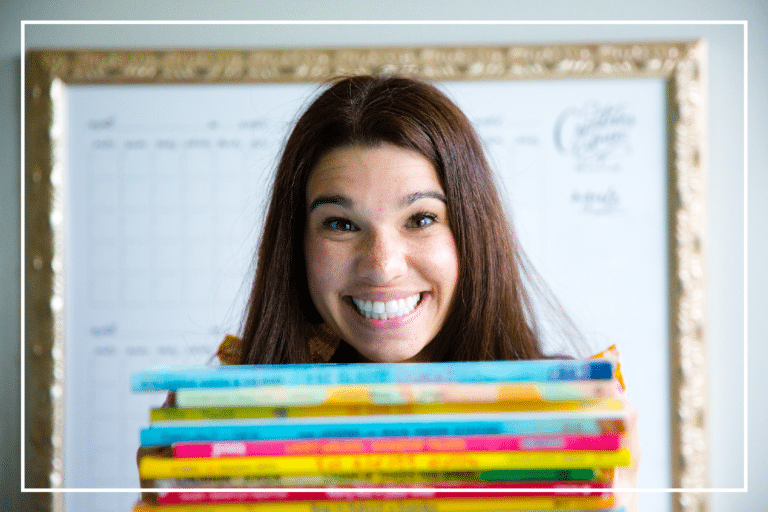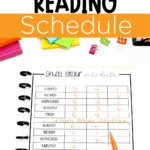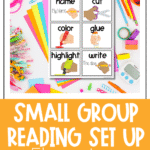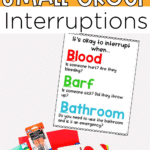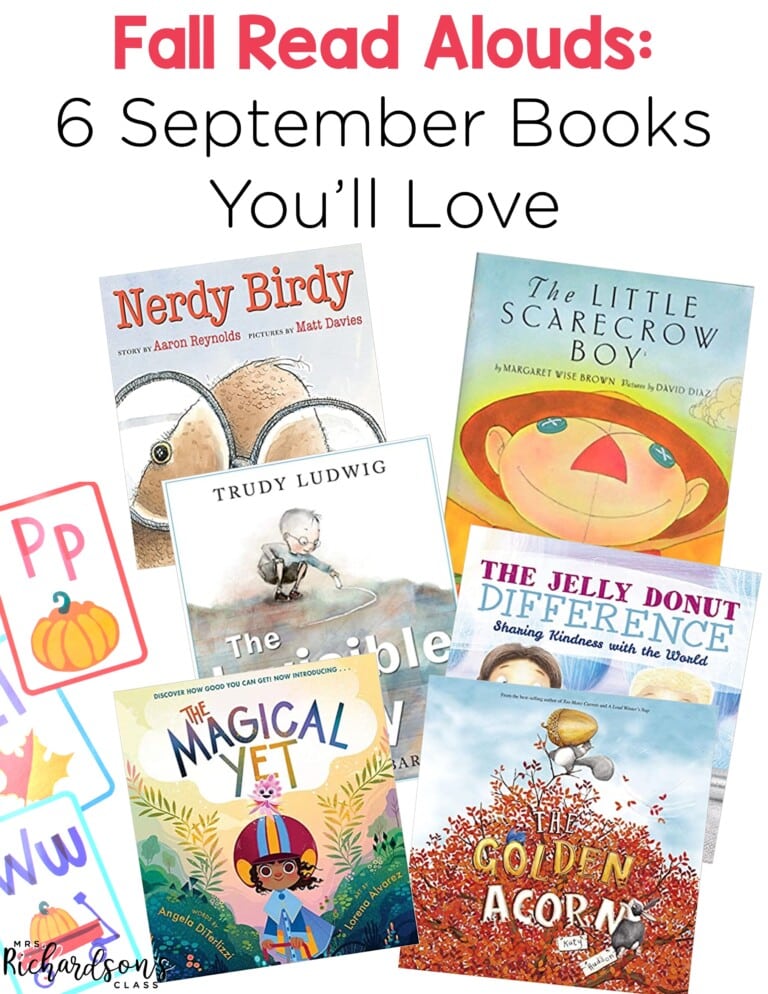

When it comes to creating a classroom where all readers thrive, your reading small group time is one of the most powerful tools in your day. It’s the perfect opportunity to deliver explicit, targeted instruction based on your students’ needs. But if managing this block feels overwhelming, you’re not alone. Between prepping materials, keeping the rest of the class engaged, and managing transitions, there’s a lot to juggle. The good news? A few reading small group tips can make all the difference. I have six reading small group tips to help make your groups more effective, efficient, and enjoyable—for both you and your students.
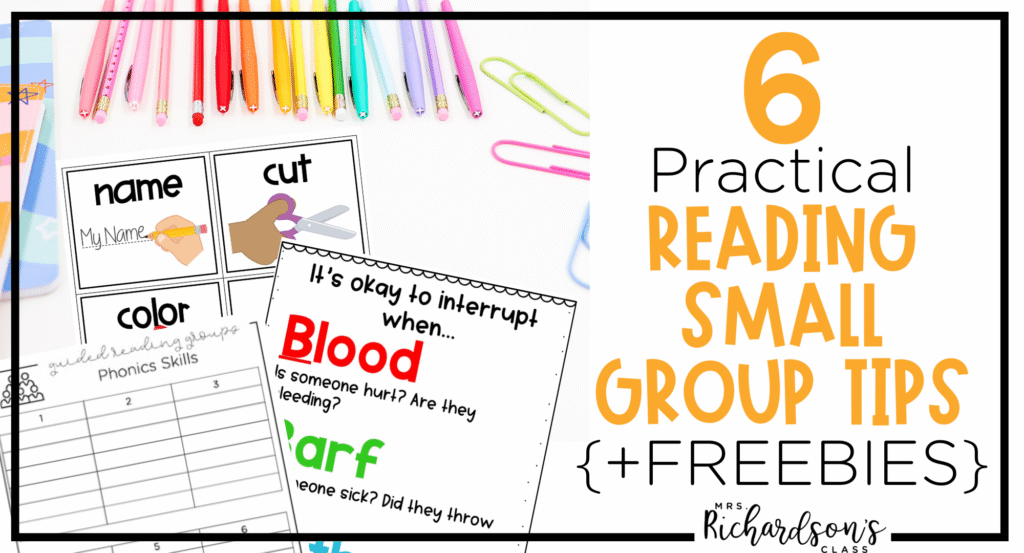
One of the biggest challenges during reading small group time is managing what the rest of the class is doing. Trust me, I have been there, too. If you find yourself constantly interrupted, it’s time to evaluate your literacy centers. The goal is for students to work independently on meaningful tasks without needing you to reteach directions every time.
Using engaging and predictable centers built on predictable routines helps eliminate confusion. It also reduces off-task behavior. When students know what to expect, they can focus and stay engaged—which frees you up to teach without distractions.
When I created my Science of Reading centers, this was something I kept in mind. After all, it was one the BEST THINGS I did for my centers time. With student directions and a solid understanding of what to do at each center, it kept them engaged and gave me the small group time I wanted for Tier 2 instruction!

Another helpful tip to add to your reading small group tips is to minimizing interruptions. I liked to do this by introducing my class to the 3 Bs—Blood, Bard, & Bathroom—as the only reasons to interrupt your small group. It sounds silly, but it works!
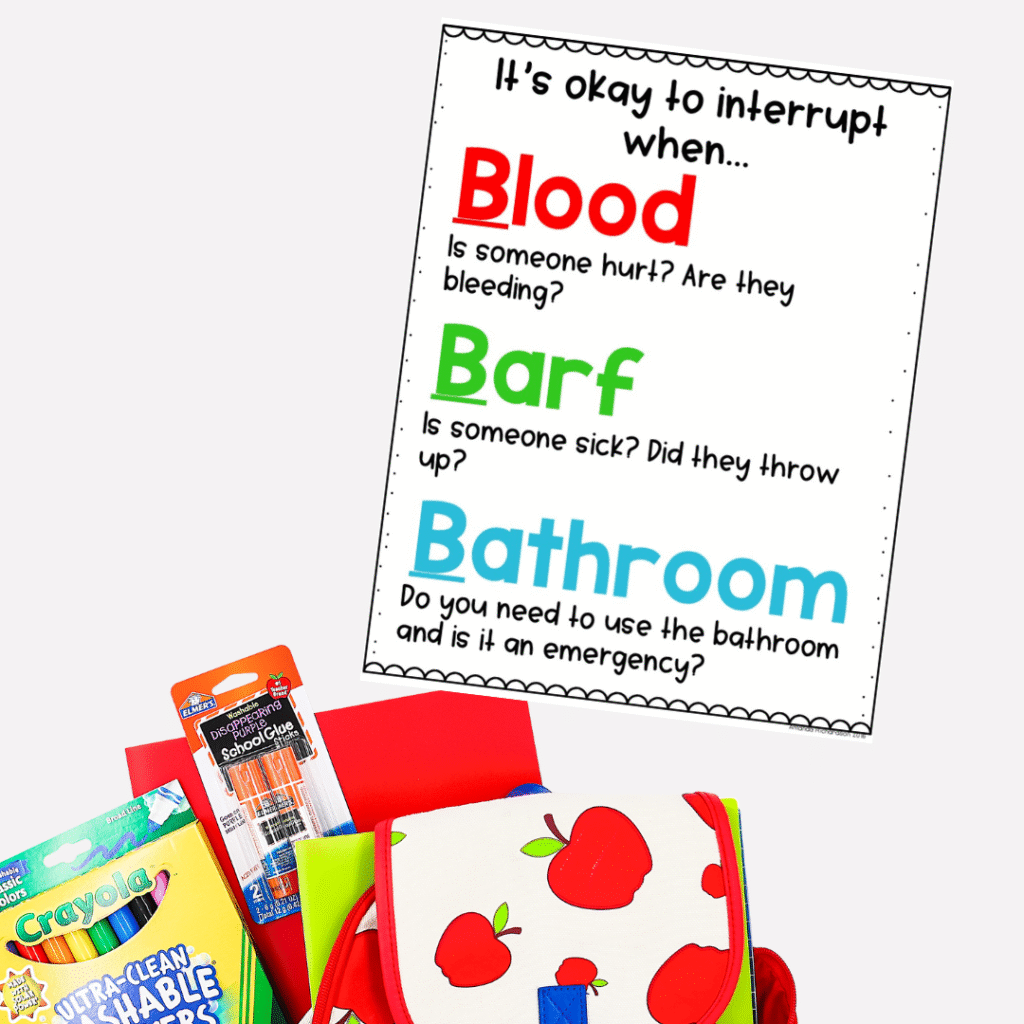
You can find a FREE 3Bs poster and more management tips in this blog post.
Effective small group instruction starts with thoughtful grouping and sticking to a schedule. Instead of simply using reading levels like many of us used to, group your students by their current phonics skill needs. This allows you to provide targeted, explicit instruction that moves students forward in decoding and fluency. Later in the year, once students are more fluent, your groups may shift to focus more on comprehension strategy needs.
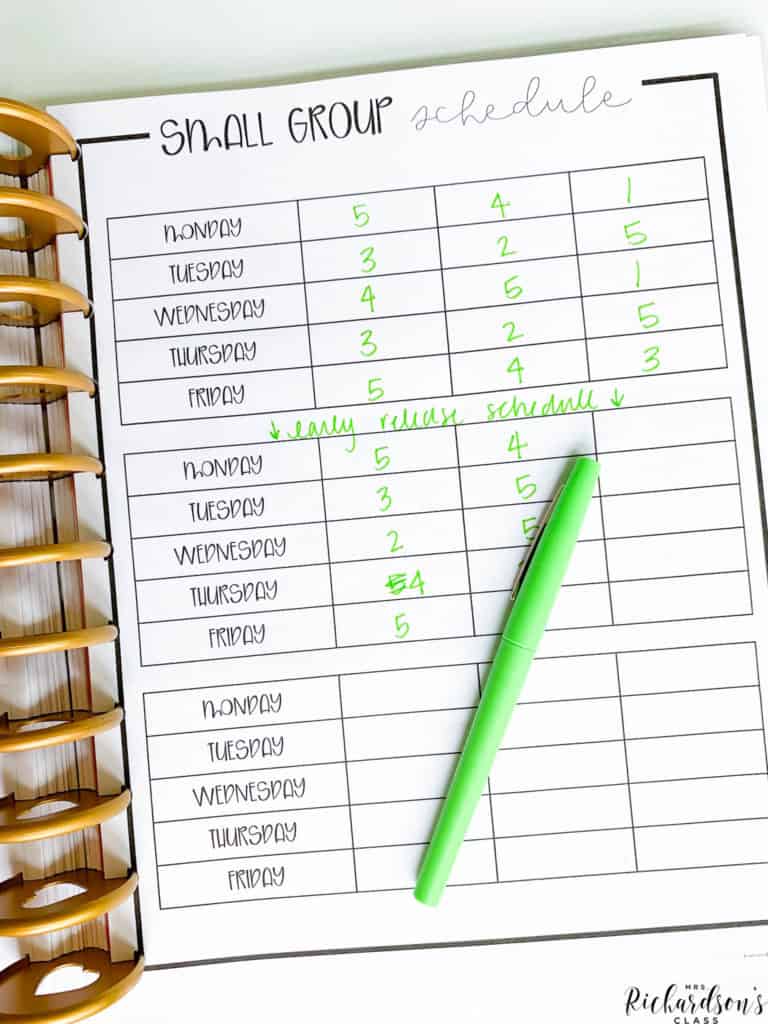
If you’re unsure how to structure your small group schedule, I’ve already broken that down for you in a blog post. It can help you map out rotations that work in real classrooms. I talk more about how to group your students HERE in this post filled with more helpful reading small group tips.
One simple yet powerful tool for managing your small group time is a visual timer that students can see. It helps with transitions, builds time awareness, and keeps your groups moving at a steady pace. I used a simple kitchen timer that was a magnet on my board for many years! It’s one of the best reading small group tips that is tried and true!

If you’re using center rotations, a timer displayed on the board or on your classroom slides gives students a visual cue for how much time they have left. I include a built-in timer in my Literacy Center Rotation Slides so that you don’t have to worry about watching the clock—it’s done for you. Kids quickly learn the routine and transitions become smooth and automatic.
One of the easiest ways to make your small group time more effective is to prepare lessons beforehand that are both engaging and purposeful. No more scrambling when it’s small group time. Take the time to prepare because it will make everything else run smoothly!
If you’re still searching for the right resource, my Science of Reading Small Group Curriculum is designed specifically for K-2 teachers who want high-quality, skill-based lessons that are easy to prep, laid out, and fun for students. Each lesson includes activities that build decoding, fluency, and comprehension while keeping kids engaged and learning.
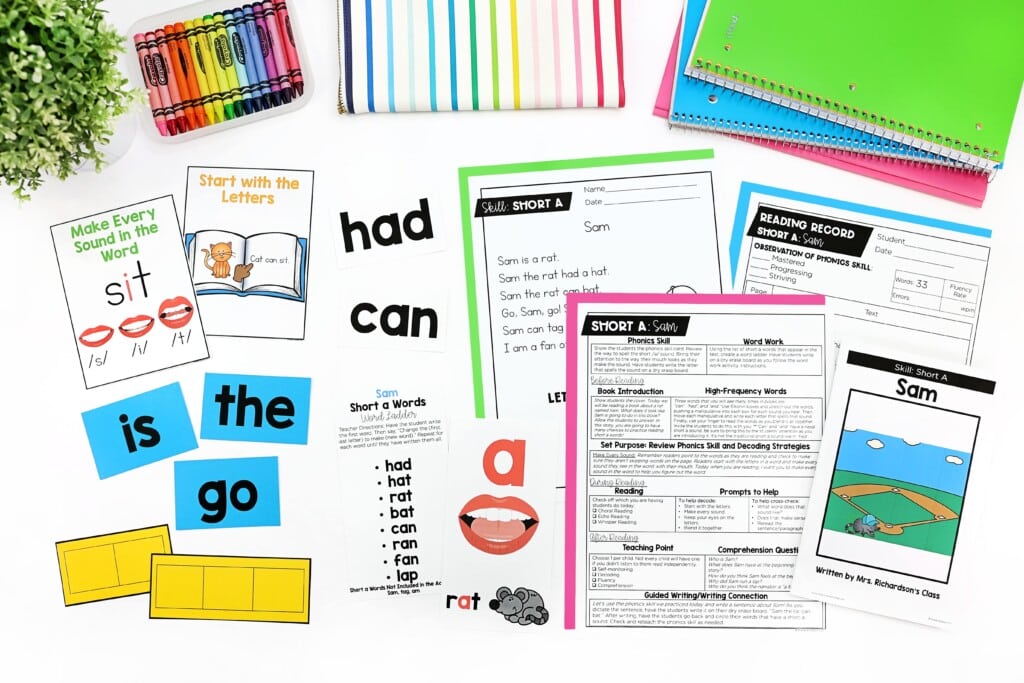
Grab a sample lesson FREE when you join our email community!
Students thrive when expectations are clear. We set them up for success! That’s why visual cues are so important as on elf your reading small group tips to add to your list. Posting visual directions for any task they are completing independetly gives students a reference they can return to without needing to ask you.

They’re especially helpful for early readers and English language learners. I’ve shared ideas and free visual direction resources in a previous blog post. Print them out, laminate them, and add magnetic tape to the back to post them on your dry erase board! Be sure to grab the FREEBIE!
This tip might be the most important to add to your reading small group tips: don’t rush to start pulling groups. Spend time teaching, modeling, and rehearsing the routines and expectations with your class before you ever sit down at your small group table. Think of this time as an investment—what you do upfront will pay off tenfold later. A wise, seasoned teacher taught me early on to say, “Go slow to go fast!”
Teach students how to rotate, how to handle problems independently, and how to use materials appropriately. Role-play transitions. Practice using the timer. Review the visual directions. When students are confident and know what’s expected, your small group time runs much more smoothly.
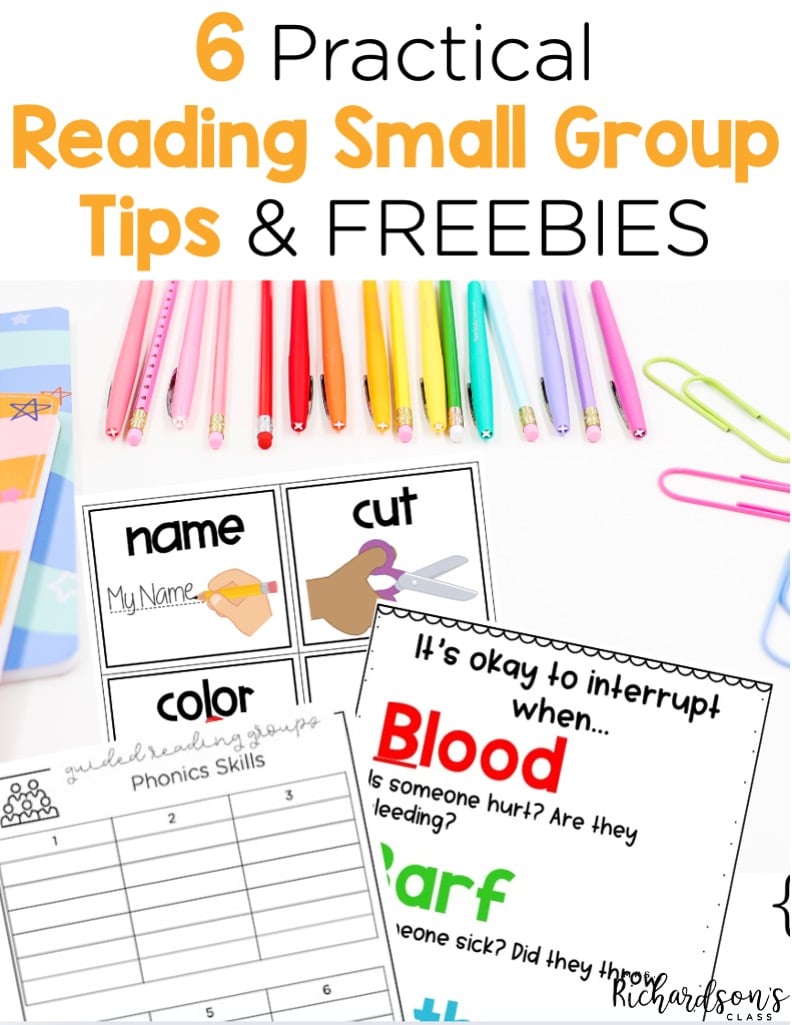
Strong small group instruction doesn’t happen by chance—it’s built through incorporating many reading small group tips like intentional planning, clear routines, and meaningful materials. Whether you’re a seasoned teacher or just beginning to refine your approach, these reading small group tips can help you create a more focused and productive literacy block.
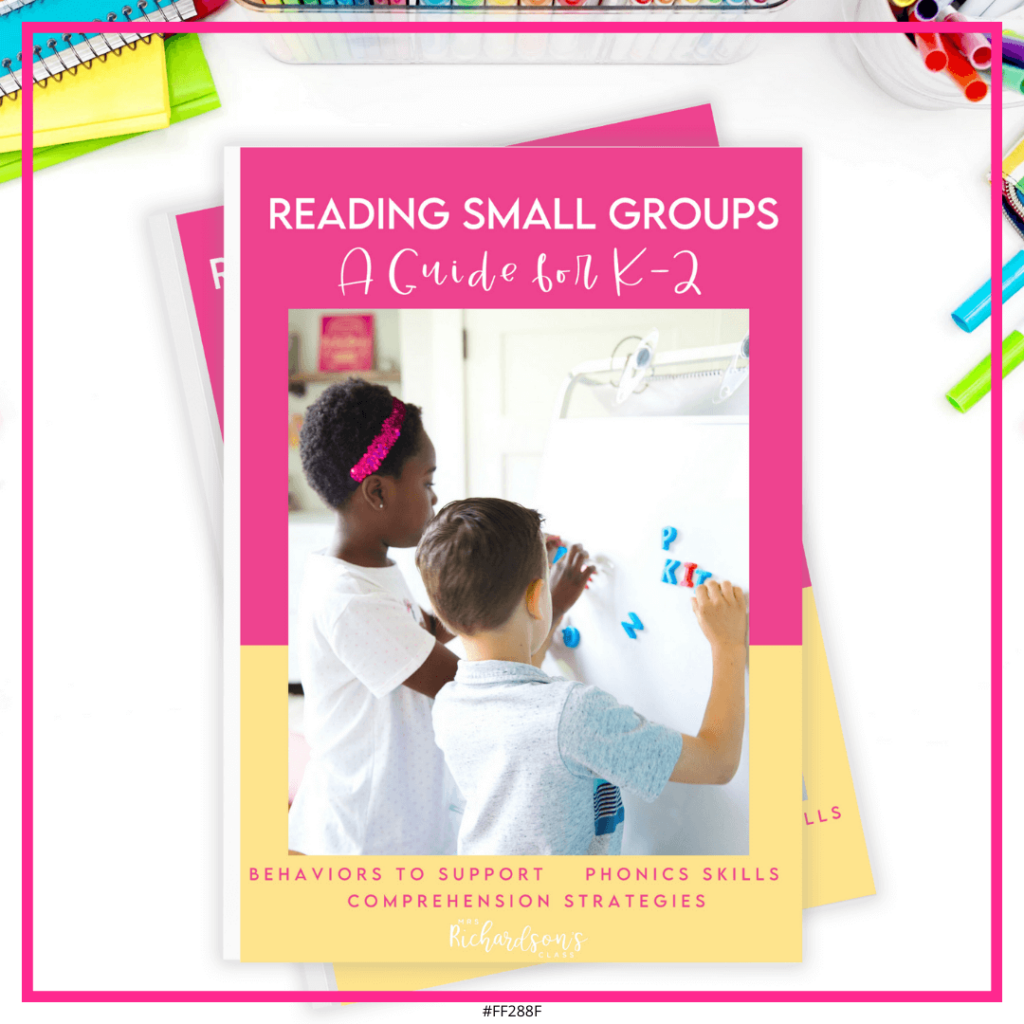
Want to use the latest research to boost your readers during small groups? This FREE guide is packed with engaging ideas to help them grow!

I’m a K-1 teacher who is passionate about making lessons your students love and that are easy to implement for teachers. Helping teachers like you navigate their way through their literacy block brings me great joy. I am a lifelong learner who loves staying on top of current literacy learning and practices. Here, you’ll find the tools you need to move your K-2 students forward!

